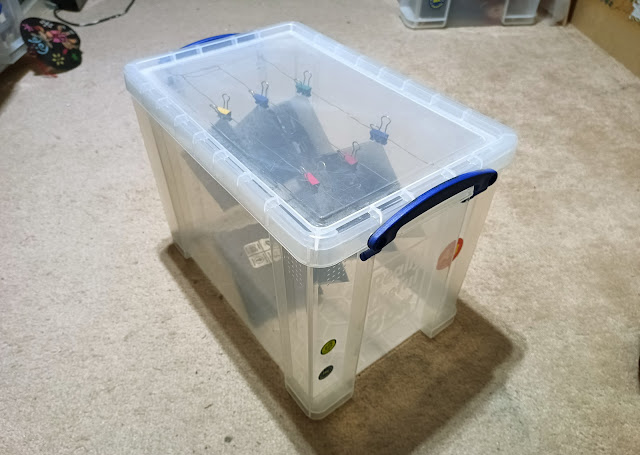For those who engage in the DIY development of their own large format or any type of film, the drying process is a crucial step. Many opt to hang the film in their bathroom, a relatively dust-free environment due to frequent hot water usage creating steam that keeps dust at bay. However, a common inconvenience which arises in my household is when family members use the bathroom the next morning, necessitating the relocation of the film for the rest of the day until it can be scanned in the evening when I come back from work.
With medium format film, after an overnight drying period, the film is cut into sections and placed in a book. This technique flattens the film, facilitating the scanning process, and the book enclosure minimizes the risk of dust adhering to the film. This can then be left safe for when I come around to developing it.
When dealing with large format sheet film, the bathroom lacks the necessary space for drying, requiring a more expansive drying solution. Traditional clothesline options or makeshift hanging devices like a sock hanger are great but are impractical in my bathroom. In response, a drying cupboard, I have seen used by film development companies, becomes a desirable solution. These cupboards often feature a fan and a filter system, promoting clean airflow for quicker drying.
In the absence of a drying cupboard, an innovative alternative is employed. I used an A4-sized 19L Really Useful Box, fitted with wire strung across three times to accommodate six sheets of film – the capacity of the Mod54 tank. which is what I use. Upon development, each film sheet is clipped to the wire, allowing it to hang within the box. The lid is then secured to prevent further dust contamination. During film development, a glass of hot water may be introduced to generate steam within the box, effectively trapping excess dust. To manage moisture accumulation, a Reusable Car Interior Dehumidifier pad is placed at the bottom of the box, aiding in quicker drying. This setup, when placed on a shelf, ensures the film remains undisturbed by curious hands, resulting in noticeably cleaner scans.
I did have an Idea to fit a small low powered fan on the side or on top to generate a bit of extra airflow to aid in drying, but I've actually found what I have at the moment is sufficient and works well.
In the world of DIY film development, a simple box has become my secret weapon for achieving cleaner, hassle-free results. As my films gently sway in their enclosed space, protected from dust and curious hands, I find solace in this makeshift solution. It's a reminder that sometimes, innovation is born out of necessity. Here's to capturing moments, both on film and in the ingenuity of our own solutions.






Comments
Post a Comment